- Clone
- 29F.1A12 (See other available formats)
- Regulatory Status
- RUO
- Other Names
- PD-1, Programmed Death-1, PDCD1
- Isotype
- Rat IgG2a, κ
- Ave. Rating
- Submit a Review
- Product Citations
- publications
CD279, also known as programmed death-1 (PD-1), is a 50-55 kD glycoprotein belonging to the CD28 family of the Ig superfamily. PD-1 is expressed on activated splenic T and B cells and thymocytes. It is induced on activated myeloid cells as well. PD-1 is involved in lymphocyte clonal selection and peripheral tolerance through binding its ligands, B7-H1 (PD-L1) and B7-DC (PD-L2). It has been reported that PD-1 and PD-L1 interactions are critical to positive selection and play a role in shaping the T cell repertoire. PD-L1 negative costimulation is essential for prolonged survival of intratesticular islet allografts.
Product DetailsProduct Details
- Verified Reactivity
- Mouse
- Antibody Type
- Monoclonal
- Host Species
- Rat
- Immunogen
- PD-1 cDNA followed by PD-1-Ig fusion protein
- Formulation
- Phosphate-buffered solution, pH 7.2, containing 0.09% sodium azide
- Preparation
- The antibody was purified by affinity chromatography and conjugated with Spark Blue™ 574 under optimal conditions.
- Concentration
- 0.2 mg/mL
- Storage & Handling
- The antibody solution should be stored undiluted between 2°C and 8°C, and protected from prolonged exposure to light. Do not freeze.
- Application
-
FC
- Recommended Usage
-
Flexi-Fluors™ are provided at a standard 0.2 mg/mL concentration. We recommend titrating this reagent to determine the optimal concentration for each application. For many flow cytometry applications, conjugated antibodies perform well at concentrations ranging from 0.03 to 1.0 µg per million cells in 100 µL. We recommend testing a range of concentrations starting from 10 µg/mL.
For example, make five 1:1 serial dilutions of the 0.2 mg/mL antibody. Add 5 µL of each dilution (including the undiluted antibody) to 100 µL of cells (at 107 cells/mL) to test six concentrations -- 1.0, 0.5, 0.25, 0.125, 0.06, and 0.03 µg per million cells in 100 µL volume. Compare staining patterns or create a titration curve using the MFI or staining index to determine the optimal concentration.
* Spark Blue™ 574 has a maximum excitation of 506 nm and a maximum emission of 574 nm. - Excitation Laser
-
Blue Laser (488 nm)
- Application Notes
-
Additional reported applications (for the relevant formats) include: immunohistochemical staining of acetone-fixed frozen tissue3, in vivo blocking of PD-1 binding to its ligands2,3, and spatial biology (IBEX)5,6.
- Additional Product Notes
-
For more information about Flexi-Fluors™, visit our Flexi-Fluor™ page and review FAQs associated with this product line.
-
Application References
(PubMed link indicates BioLegend citation) -
- Good-Jacobson KL, et al. 2010. Nat. Immunol. 11:535. (FC) PubMed
- Lázár-Molnár E, et al. 2008. Proc. Natl. Acad. Sci. USA 105:2658. (Block)
- Liang SC, et al. 2003. Eur. J. Immunol. 33:2706. (FC, IHC, Block)
- Tobias J, et al. 2020. Front Immunol. 11:895 (FC, ELISA) PubMed
- Radtke AJ, et al. 2020. Proc Natl Acad Sci U S A. 117:33455-65. (SB) PubMed
- Radtke AJ, et al. 2022. Nat Protoc. 17:378-401. (SB) PubMed
- RRID
-
AB_3662493 (BioLegend Cat. No. 285153)
Antigen Details
- Structure
- A 50-55 kD glycoprotein belonging to the CD28 family of the Ig superfamily.
- Distribution
-
Induced on splenic T and B lymphocytes, thymocytes, and myeloid cells after stimulation.
- Function
- Involved in lymphocyte clonal selection and peripheral tolerance, prolonged survival of allografts.
- Ligand/Receptor
- B7-H1 (PD-L1) and B7-DC (PD-L2)
- Cell Type
- B cells, T cells
- Biology Area
- Cancer Biomarkers, Immunology, Inhibitory Molecules
- Molecular Family
- CD Molecules, Immune Checkpoint Receptors
- Antigen References
-
1. Nishimura H, et al. 2001. Science 291:319
2. Agata Y, et al. 1996. Int. Immunol. 8:765
3. Liang SC, et al. 2003. Eur. J. Immunol. 33:2706
4. Barber DL, et al. 2006. Nature 439:682
5. Keir ME, et al. 2005. J. Immunol. 175:7372
6. Koehn BH. et al. 2008. J Immunol. 181:5313 - Gene ID
- 18566 View all products for this Gene ID
- UniProt
- View information about CD279 on UniProt.org
Related FAQs
- What are Flexi-Fluors?
-
Flexi-Fluors are rapidly made-to-order conjugated antibodies. The technology, manufacturing processes, and specifications used to create Flexi-Fluors are the same as our regular catalog products. However, the optimal concentration and performance of each Flexi-Fluor must be determined by the customer.
- How quickly will I receive my order?
-
We aim to ship Flexi-Fluors within 2-3 weeks of receipt of your order. However, depending on your location, shipping times may vary.
- How are Flexi-Fluors different from regular catalog products?
-
Flexi-Fluors are made on demand, specifically for you. Flexi-Fluors are manufactured using the same high-quality standards, and specifications as other catalog products. For faster delivery, Flexi-Fluors are not tested by flow cytometry to determine optimal concentrations or evaluate performance. This testing needs to be performed by the customer.
- How do I determine the optimal concentration for using my Flexi-Fluor? How should I titrate my antibody?
-
Flexi-Fluors are provided at a standard 0.2 mg/mL concentration. We recommend that you titrate your antibody to determine the optimal concentration to use for your application. For many flow cytometry applications, conjugated antibodies perform well at concentrations ranging from 0.03 to 1.0 µg per million cells in 100 µL volume. We recommend that you test a range of concentrations starting from 10 µg/mL.
For example, make five 1:1 serial dilutions of your 0.2 mg/mL antibody. Add 5 µL of each dilution (including the undiluted antibody) to 100 µL of cells (at 107 cells/ml) to test six concentrations - 1.0, 0.5, 0.25, 0.125, 0.06, and 0.03 µg per million cells in 100 µL volume. Compare staining patterns or create a titration curve using the MFI or staining index to determine the optimal concentration.
- I can’t find the antibody-dye combination that I need. When will it be available?
-
We continuously update our catalog, introducing scores of new products every month. Please get in touch with our Technical Service team for an update on new products or recommendations for suitable alternatives to complete your panel. Or contact Custom Solutions to inquire about our affordable custom conjugation services.
- I need help to validate the performance of my Flexi-Fluor. Who should I contact?
-
Please get in touch with Technical Service for assistance.
- Can I order more than 50 μg of a Flexi-Fluor?
-
Yes, you can order multiple vials of the same Flexi-Fluor products. We cannot guarantee, however, that these vials will be bottled from the same lot. For bulk single-lot orders, contact our Custom Solutions team.
- What is the expiration date of my Flexi-Fluor?
-
Expiration dates can be found on the vial label or by using our CoA lookup tool.
Other Formats
View All PD-1 Reagents Request Custom ConjugationCompare Data Across All Formats
This data display is provided for general comparisons between formats.
Your actual data may vary due to variations in samples, target cells, instruments and their settings, staining conditions, and other factors.
If you need assistance with selecting the best format contact our expert technical support team.
-
PE anti-mouse CD279 (PD-1)
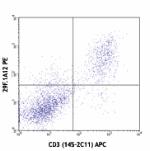
Con-A and IL-2 stimulated (3 days) C57BL/6 splenocytes stain... 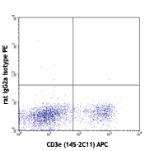
Con A stimulated (3 days) C57BL/6 splenocytes stained with r... -
Purified anti-mouse CD279 (PD-1)

Con A and IL-2 stimulated mouse splenocytes (day 3) were sta... 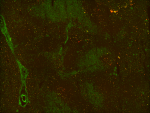
Fresh, frozen mouse spleen was stained with purified CD279 c... -
PerCP/Cyanine5.5 anti-mouse CD279 (PD-1)

Con-A and IL-2 stimulated C57BL/6 splenocytes (3 days) stain... -
APC anti-mouse CD279 (PD-1)
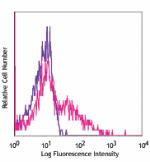
Con-A and IL-2 stimulated C57BL/6 splenocytes (3 days) stain... -
Biotin anti-mouse CD279 (PD-1)
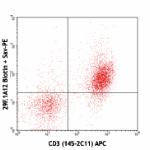
Con-A and IL-2 stimulated (3 days) C57BL/6 splenocytes stain... 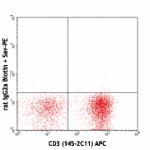
Con A-stimulated (3 days) C57BL/6 splenocytes stained with C... -
FITC anti-mouse CD279 (PD-1)
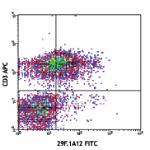
Con-A and IL-2 stimulated C57BL/6 mouse splenocytes (3 days)... 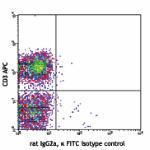
-
PE/Cyanine7 anti-mouse CD279 (PD-1)

Con-A and IL-2 stimulated (3 days) C57BL/6 mouse splenocytes... -
Brilliant Violet 421™ anti-mouse CD279 (PD-1)

Con-A and IL-2 stimulated C57BL/6 splenocytes (3 days) were ... 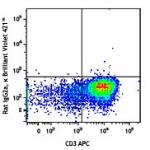

Mice were injected subcutaneously with sheep red blood cells... -
Brilliant Violet 605™ anti-mouse CD279 (PD-1)
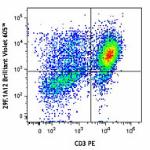
Con-A and IL-2 stimulated C57BL/6 splenocytes (3 days) were ... -
APC/Cyanine7 anti-mouse CD279 (PD-1)

Con-A and IL-2 stimulated splenocytes (3 days) were stained ... -
Brilliant Violet 785™ anti-mouse CD279 (PD-1)
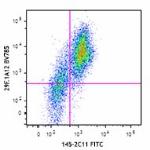
Con-A and IL-2 stimulated C57BL/6 splenocytes (3 days) were ... 
-
PE/Dazzle™ 594 anti-mouse CD279 (PD-1)
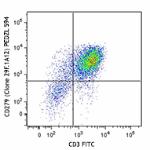
Con-A and IL-2 stimulated C57BL/6 splenocytes (three days) w... 
-
Alexa Fluor® 647 anti-mouse CD279 (PD-1)

Con A and IL-2 stimulated C57BL/6 splenocytes (three days) w... 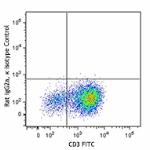
-
Brilliant Violet 711™ anti-mouse CD279 (PD-1)
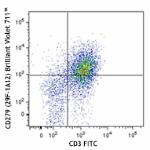
Con-A and IL-2 stimulated C57BL/6 splenocytes (three days) w... 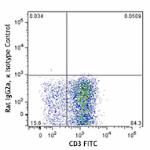
-
GoInVivo™ Purified anti-mouse CD279 (PD-1)
-
APC/Fire™ 750 anti-mouse CD279 (PD-1)
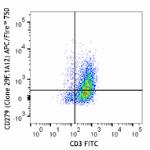
Con-A and IL-2 stimulated C57BL/6 mouse splenocytes (3 days)... 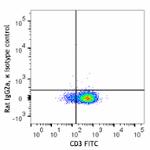
-
Brilliant Violet 510™ anti-mouse CD279 (PD-1)
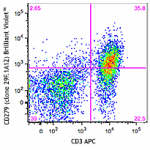
Con-A and IL-2 stimulated C57BL/6 mouse splenocytes (3 days)... 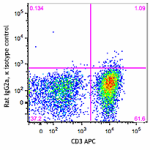
-
Ultra-LEAF™ Purified anti-mouse CD279 (PD-1)

Con A and IL-2 stimulated mouse splenocytes (day 3) were sta... -
APC/Fire™ 810 anti-mouse CD279 (PD-1) Antibody

Con-A and IL-2 stimulated C57BL/6 splenocytes (three days) w... -
PE/Fire™ 810 anti-mouse CD279 (PD-1) Antibody

Con-A and IL-2 stimulated C57BL/6 mouse splenocytes (three d... -
PE/Cyanine5 anti-mouse CD279 (PD-1)

Con-A and IL-2 stimulated C57BL/6 splenocytes (3 days) were ... -
PE/Fire™ 640 anti-mouse CD279 (PD-1)

C57BL/6 mouse splenocytes were stimulated with Con-A and IL-... -
Spark Red™ 718 anti-mouse CD279 (PD-1)

Con-A and IL-2 stimulated C57 splenocytes (3 days) were stai... -
PerCP/Fire™ 806 anti-mouse CD279 (PD-1)

Con-A and IL-2 stimulated C57BL/6 splenocytes (three days) w... -
Brilliant Violet 750™ anti-mouse CD279 (PD-1)

Con-A and IL-2 stimulated C57BL/6 splenocytes (3 days) stain... -
PerCP/Fire™ 780 anti-mouse CD279 (PD-1)

Con-A and IL-2 stimulated C57BL/6 splenocytes (three days) w... -
PE/Fire™ 700 anti-mouse CD279 (PD-1)

Unstimulated BALB/c splenocytes were stained with anti-mouse... 
Con A and IL-2 stimulated BALB/c splenocytes (three days) we... -
PE/Fire™ 744 anti-mouse CD279 (PD-1)

BALB/c mouse splenocytes were stained with anti-mouse CD3 (c... 
Con-A and IL-2 stimulated (3 days) BALB/c mouse splenocytes ... -
Brilliant Violet 650™ anti-mouse CD279 (PD-1)

Con-A and IL-2 stimulated C57BL/6 mouse splenocytes (3 days)... -
Spark Blue™ 574 anti-mouse CD279 (PD-1) (Flexi-Fluor™)
-
Spark PLUS B550™ anti-mouse CD279 (PD-1)

Con A+IL-2 stimulated BALB/c splenocytes (3 days) were stain...

 Login / Register
Login / Register 













Follow Us